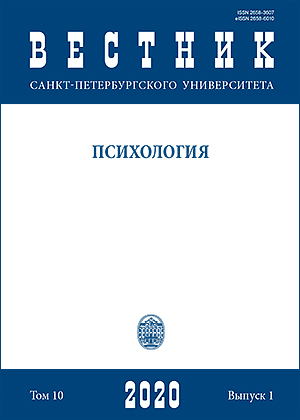Proactive safety management and proactive behavior of personnel as resources of Resilience Engineering
DOI:
https://doi.org/10.21638/spbu16.2020.103Abstract
The article substantiates the relevance of ensuring the technosphere safety of socio-technical systems based on proactive management and proactive working behavior. The development of ideas about the role of the human factor in solving the problem of integrated adaptive safety of socio-technical systems is described. Modern organizations should be able to adapt to work in an unpredictable social, political and climatic environment, with the likelihood of an unforeseen resonant combination of technical, climatic and humanitarian threats, possessing the capabilities of a comprehensive adaptive system. As a result, the role of the human factor as an active element of the sociotechnical system is increasing. The comparative characteristics of the concepts of classical Safety management systems (SMS), High Reliable Organization (HRO) and Resilience Engineering (RE) are given in terms of the possibilities for ensuring the safety of social and technical systems in a dynamic technosphere environment. Safety management systems (Safety-I) try to prevent future incidents based on past events, which does not reflect the dynamics of changes in the external and internal environment. High Reliable Organizations create excessive control loops and additional resources, which results in the loss of effectiveness of most organizations, and at the same time does not provide absolute safety. Resilience Engineering (Safety-II) relies on the normal variability of activity processes as a potential for proactive safety. Analysis of the role of the human factor suggests the need for the implementation of proactive safety management to prevent the occurrence of dangerous resonant states in the system. The proactive working behavior of personnel ensures the adaptation of functions to changing conditions of the external and internal environment of the organization and the anticipation of dangerous resonant variability of working activity. The synthesis of the traditional approach to safety (Safety-I) and Safety-II, based on the introduction of resilience engineering, allows for the prevention of dangerous resonant deviations in activity, while maintaining the necessary level of productivity and quality.
Keywords:
technosphere safety, resilience engineering, Safety-II, proactive safety management, anticipation, proactive working behavior
Downloads
References
References
Downloads
Published
How to Cite
Issue
Section
License
Articles of "Vestnik of Saint Petersburg University. Psychology" are open access distributed under the terms of the License Agreement with Saint Petersburg State University, which permits to the authors unrestricted distribution and self-archiving free of charge.




